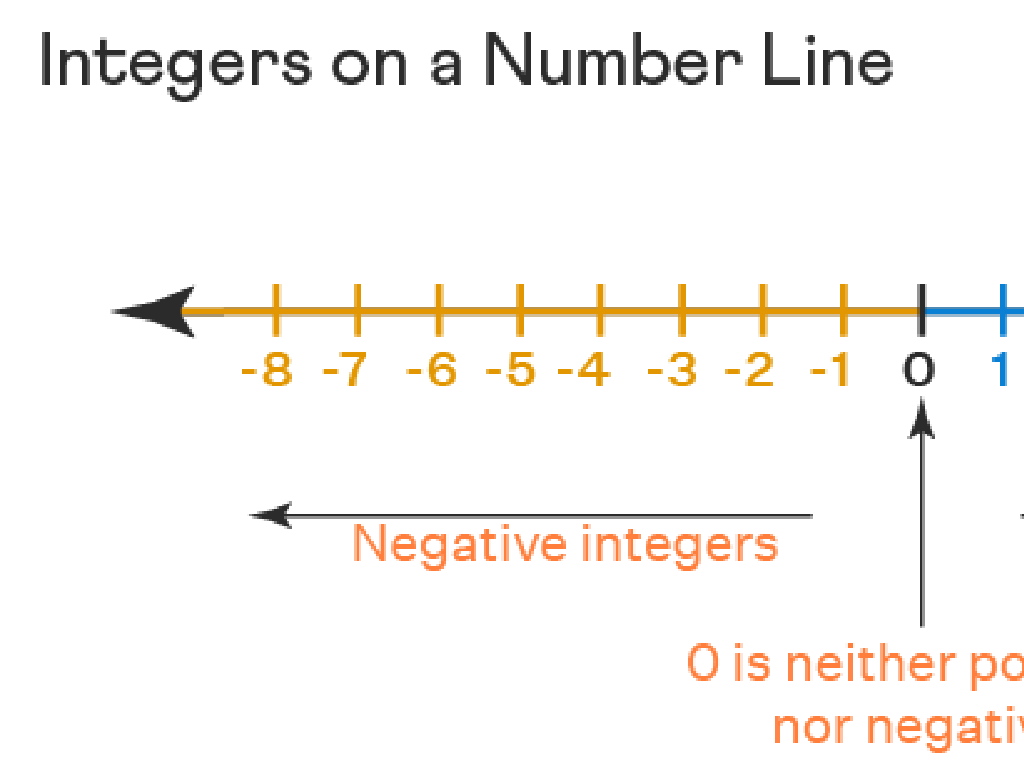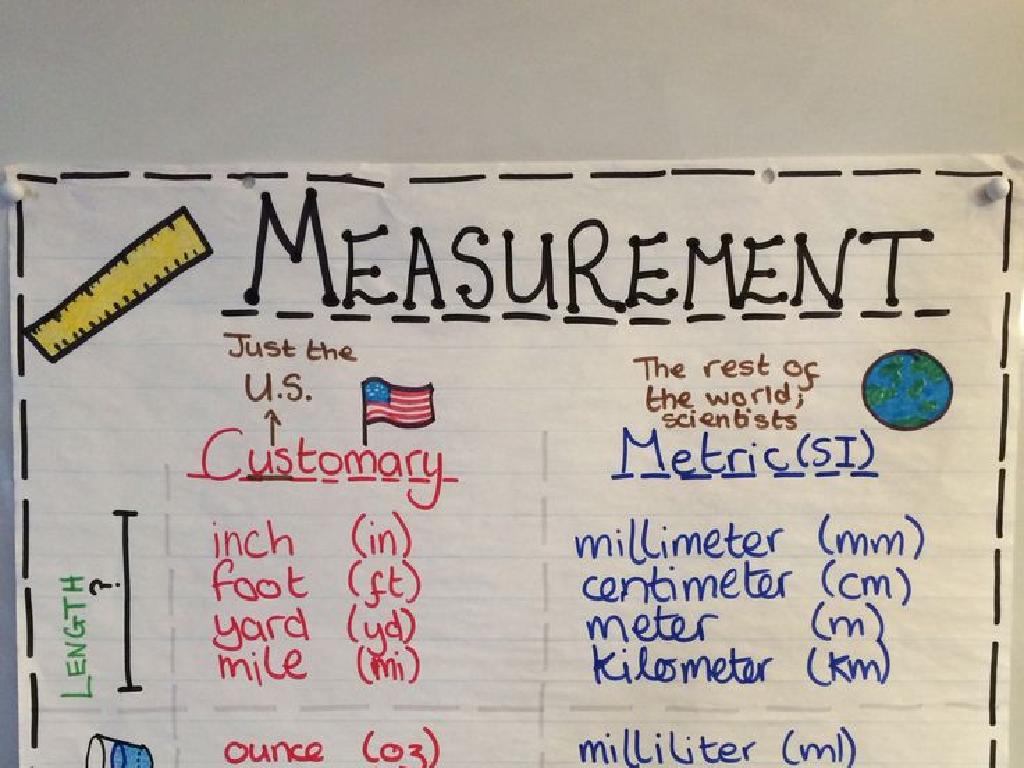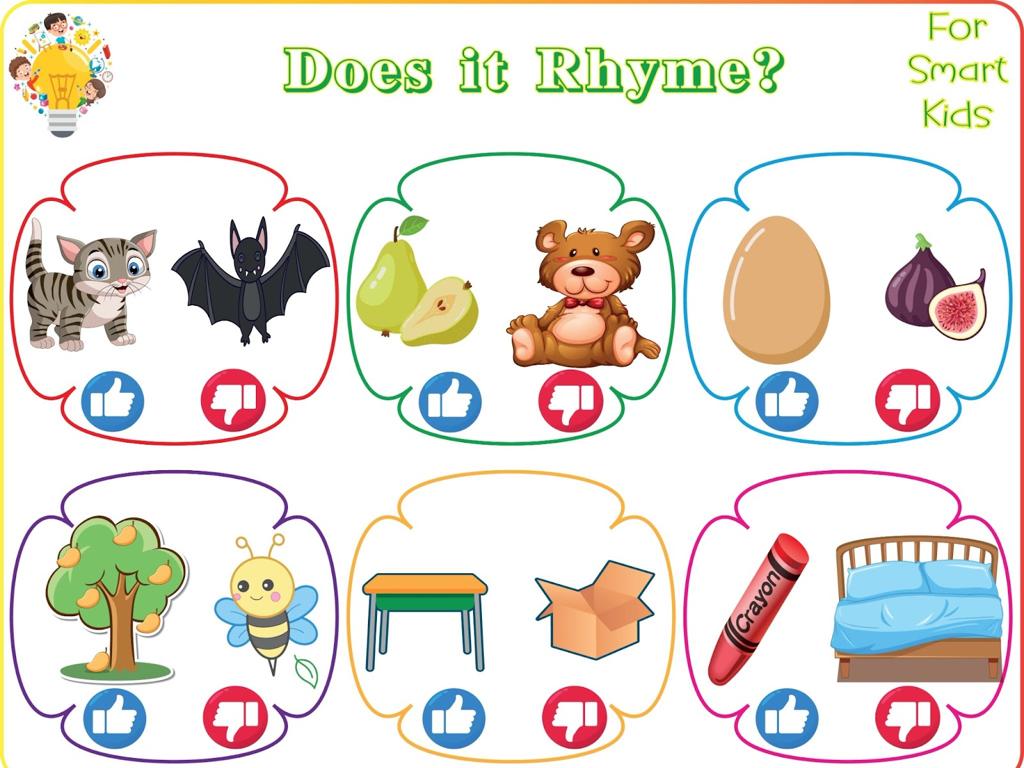Add Three Numbers - Word Problems
Subject: Math
Grade: First grade
Topic: Addition Word Problems Up To 20
Summary: This engaging first grade math lesson introduces students to solving addition word problems with three numbers, focusing on totals up to 20. Using real-life examples involving apples, balloons, and ducks, children learn to identify key information and apply addition strategies like counting objects and drawing. Interactive activities and collaborative practice boost understanding and confidence, making addition both meaningful and fun for young learners. Perfect for building foundational problem-solving skills.
Please LOG IN to download the presentation. Access is available to registered users only.
View More Content
Welcome to Addition!
– Becoming addition experts
– Learn to add three numbers
– For example, 2 apples + 3 apples + 4 apples
– Adding speeds up counting
– Instead of counting each apple, we add
– Practice with word problems
– Solve problems about things we count daily
|
This slide introduces first graders to the concept of addition as a tool for counting things more efficiently. Start by explaining that becoming an addition expert means being able to combine numbers quickly and accurately. Demonstrate how to add three numbers using simple examples, such as adding groups of apples. Emphasize that addition helps us count faster than counting one by one. Engage the students with word problems that relate to their everyday experiences, like counting toys, fruits, or pencils. Encourage them to use their fingers or objects to help them add at first. The goal is to build their confidence with adding three numbers through practice and to show them how useful addition is in their daily lives.
Understanding Addition: Adding Three Numbers
– Addition combines numbers
– Putting together numbers to see the total.
– Use objects to add numbers
– Toys, fingers, drawings help visualize addition.
– Practice with word problems
– Solve problems about combining groups of items.
– Total sum up to 20
|
This slide introduces the concept of addition as a way to combine numbers to find a total. It’s important to use concrete examples that first graders can relate to, such as adding toys or using their fingers to count. Encourage the use of visual aids like drawings to help them better understand the concept. Provide simple word problems that involve adding three numbers together, ensuring that the total does not exceed 20. This will help them grasp the concept of addition within a range that is appropriate for their level. During the lesson, engage the students with hands-on activities where they can physically combine groups of objects to find the total. This tactile experience reinforces their understanding of addition.
Adding Numbers in Stories
– Word problems are number stories
– Read the story to find numbers
– Find the numbers in the story that are important
– Understand what numbers to add
– Look for words like ‘in all’, ‘together’, or ‘total’ to see what to add
– Practice with an example problem
– Example: If Sam has 3 apples, and his mom gives him 2 more, and he finds 1 on the ground, how many does he have in all?
|
This slide introduces students to the concept of addition word problems. Emphasize the importance of reading the problem carefully to understand the story and identify the numbers that need to be added. Highlight key phrases that often indicate addition, such as ‘in all’, ‘together’, or ‘total’. Use simple, relatable examples to illustrate the concept. For instance, use stories involving familiar items like apples or toys. Encourage students to visualize the problem and use objects or drawings to help them add the numbers together. The goal is to make them comfortable with translating a narrative into a mathematical addition problem.
Adding with Apples: Word Problem
– Start with 2 apples
– Add 3 more apples
– Add 1 last apple
– Count all apples together
– Let’s add: 2 + 3 + 1 equals how many?
|
This slide introduces a simple addition word problem involving apples to help first graders practice adding three numbers together. Begin by showing students 2 apples, then add 3 more to the group, and finally add 1 more apple. Encourage the students to visualize the apples as you add them one group at a time. After all the apples have been ‘added’, ask the students to count all the apples together to find the total. This exercise helps to reinforce the concept of addition and provides a visual aid to support their understanding. Make sure to engage the students by asking them to participate in counting and to explain their thought process.
Adding Balloons: Practice Problem
– Count Tom’s red balloons
– Tom has 3 red balloons
– Count Tom’s blue balloons
– Tom has 2 blue balloons
– Count Tom’s green balloons
– Tom has 4 green balloons
– Add all the balloons together
– 3 red + 2 blue + 4 green = 9 balloons
|
This slide presents a simple addition word problem involving balloons of different colors to help first graders practice adding three numbers. Start by having the students visualize the balloons in groups by color, then count each group separately. After they have the individual totals, guide them to add all three numbers together to find the total number of balloons. Encourage students to use physical counters or draw pictures if they need help visualizing the problem. This exercise will reinforce their understanding of addition within 20 and develop their ability to solve word problems.
Adding Ducks: Practice Problem
– Start with 5 ducks in the pond
– 2 more ducks join the group
5 ducks + 2 ducks makes how many?
– Then 1 more duck comes along
Add 1 more duck to that total
– How many ducks are there now?
Let’s count all the ducks together!
|
This slide presents a simple addition word problem involving ducks in a pond. It’s designed to help first graders practice adding three numbers together. Start by visualizing 5 ducks, then add 2 more, and finally 1 more. Encourage the students to count aloud and use their fingers if necessary. The goal is to help them understand the concept of accumulation as more ducks join the group. After solving the problem, ask the students to explain the process they used to arrive at the answer. This reinforces their understanding and helps them articulate their thought process.
Let’s Practice Together: Adding Three Numbers
– Try a problem with a classmate
– Count carefully to add numbers
– Use your fingers or objects to count
– Check your work after solving
– Did you get the same number twice?
– Share your answer with the class
|
This slide is designed to encourage collaborative learning and practice of addition with three numbers. Students should be paired up to work on a word problem together, fostering a sense of teamwork. Remind them to use counting strategies such as using fingers, objects, or drawing to help them add accurately. After solving the problem, they should verify their answer by checking their work. Once they are confident with their solution, they can share their process and answer with the class. This activity not only reinforces their addition skills but also their ability to communicate mathematical thinking. Possible activities: 1) Counting objects, 2) Drawing tally marks, 3) Using number lines, 4) Finger counting. These activities cater to different learning styles and can be rotated among students.
Class Activity: Addition Scavenger Hunt
– Let’s go on a scavenger hunt!
– Find and count items in groups
– For example, find 3 pencils, 4 erasers, and 2 clips
– Add the numbers together
– Use your fingers or drawings to add up items
– Work with a buddy to solve problems
|
This interactive activity is designed to help first graders practice adding three numbers within 20 in a fun and engaging way. Set up the classroom with various groups of items that the students can count. Encourage them to work in pairs to foster teamwork and communication. Provide them with a worksheet to record the items they find and the sums they calculate. Possible activities include finding a certain number of specific classroom objects, adding the number of windows, doors, and chairs, or combining the number of books on different shelves. Ensure that the sums do not exceed 20 to keep the activity age-appropriate. This hands-on experience will help solidify their understanding of addition through real-world application.
Great Work on Addition!
– Excellent adding three numbers
– Practice at home for perfection
– Try adding items during playtime or snacks
– Next lesson: Subtraction
– We’ll explore taking away items from a group
– Keep up the enthusiasm!
|
Congratulate the students on their hard work today with adding three numbers. Encourage them to continue practicing at home, perhaps by adding objects during playtime or counting snacks. Let them know that next time, we will begin learning about subtraction, which is just as fun and important as addition. Keep the mood positive and the students excited for their next math adventure. Provide parents with simple addition exercises that children can do at home to reinforce today’s lesson.





